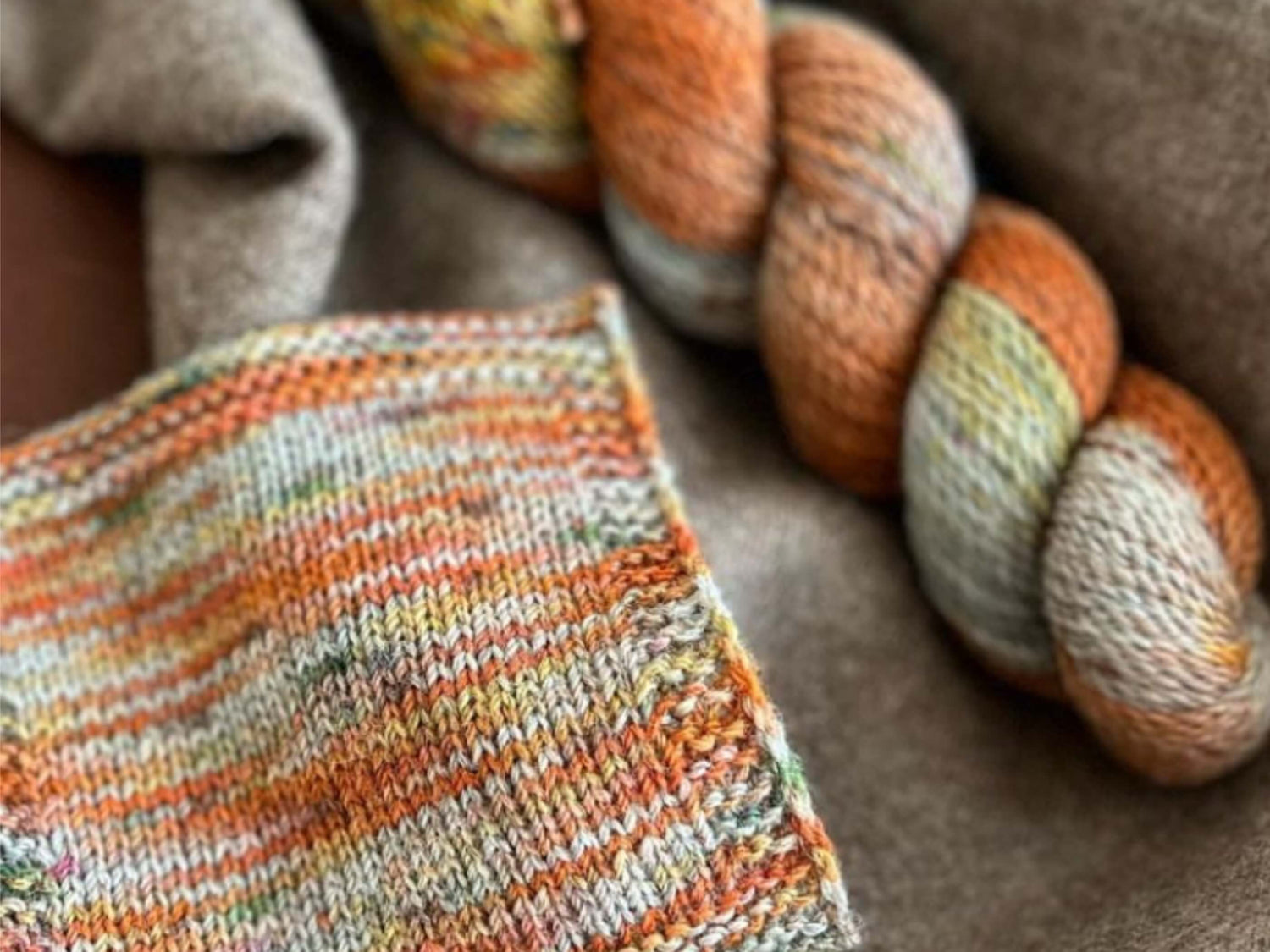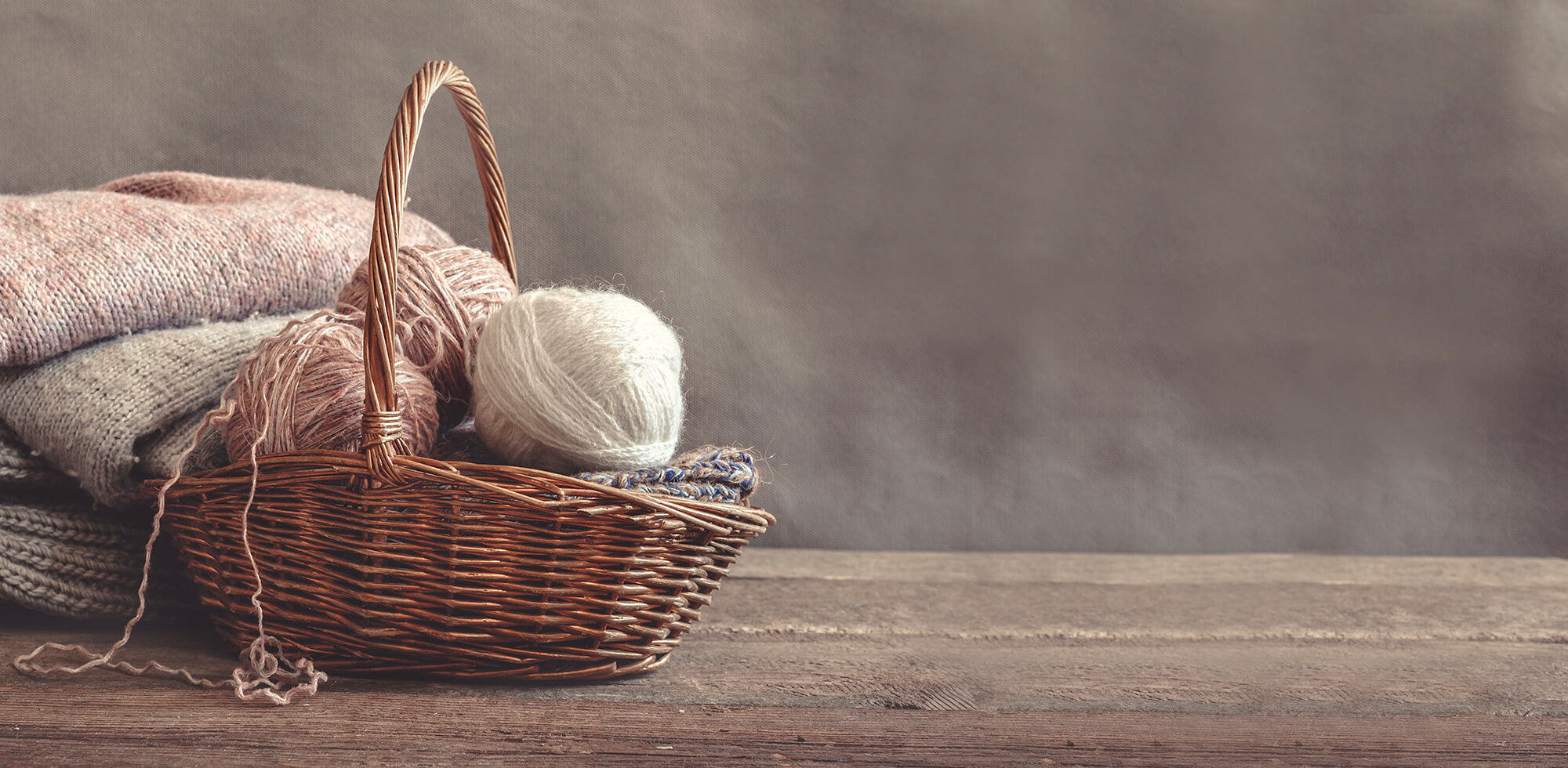By Claudia Ostrop
Working with hand-dyed yarns is a special experience. Not only do the colors, with all their nuances, gradients, and effects, set them apart from machine-dyed yarns, but the yarns themselves are often of exceptional quality. To ensure your knitting journey ends with a masterpiece, there are a few tips and tricks to keep in mind. So, let's dive into the world of hand-dyed yarns and discover how to make the most of their colorful charm!
What Makes Hand-Dyed Yarns So Special?
Hand-dyed yarns typically stand out due to their vibrant colorations. Whether delicately pastel or vividly colorful, light or dark, hand-dyed yarns practically never have a uniform color tone. Even seemingly solid-colored yarns often exhibit subtle variations. Additionally, many hand dyers are known for creating particularly colorful, vibrant, and visually striking yarns.
Hand-dyed yarns are typically sold in hanks, allowing you to marvel at their intricate colors and subtleties. In a ball, you wouldn't be able to see much of the dyeing effect. So, before you cast on those stitches, you'll need to wind the skeins into balls. For those who work with yarn hanks frequently, investing in a yarn winder and swift might be worthwhile. However, skeins can also be wound into balls by hand.
Hand-dyed yarns may still "bleed" a bit when washed. If you plan to knit a project with different colors, especially when high-contrast colors are involved, it's a good idea to conduct a small color test before starting (even before winding!). Wet a small piece of yarn and let it dry on a paper towel - if a color spot appears on the paper towel, it's advisable to rinse it thoroughly before knitting. It would be quite frustrating to wash your finished garment for the first time only to find that one color bleeds and ruins the others. Once a color has bled, it's usually irreversible. Once stained, always stained.

Choosing the Right Project for Hand-Dyed Yarns
In general, hand-dyed yarns can be used for any project as long as the gauge is correct and the material makes sense. However, the works of hand dyers are often true works of art. In such cases, the knitting pattern should not be too dominant. Hand-dyed yarns often look best when knitted in stockinette or garter stitch. This is especially true for multi-colored yarns. When knitting them in, for example, a cable pattern, neither the yarn nor the pattern is usually displayed adequately.
This is where we could also mention the often-beloved gauge swatch. Especially and precisely with hand-dyed yarns, it makes a lot of sense because this way you can see how the yarn will look when knitted. Especially when you want to combine different colors, you should try out the combinations on a sample swatch beforehand.
No Two Hanks Are Alike
One of the joys of working with hand-dyed yarns is embracing their uniqueness. It has nothing to do with lack of care; it's simply a sign of handcrafting. With hand-dyed yarns, there will never be two identical hanks. Even if they look the same at first glance, the hanks of hand-dyed yarns are always individuals. Even if they only differ in nuances. But what does that mean for knitting?
Hanks from a dyeing batch or lot- which is usually 500 to 1000 grams of yarn - will always be quite similar. However, there can be significant differences between two batches, even if the yarn and dye bath were the same. Therefore, it's advisable to always use hanks from the same dye lot for a project. The color number and "dye lot" are always stated on the label. Especially with hand-dyed yarns, it's advisable to calculate the required quantity somewhat more generously, if in doubt. The Pascuali hand-dyed yarns are always dyed in 1000g batches.
Colorful Adventure: Explore Pascuali's Hand-Dyed Yarns
We're excited to share our hand-dyed yarns with you. Alongside our standard yarn collectionn options, you'll find delightful hand-dyed variations of both our beloved classics, Pinta and Balayage.

Pinta
is ia a blend of 60% fine Merino wool sourced from Argentina, ensuring mulesing-free fibers, along with 20% Mulberry silk and 20% ramie. The silk comes from China, while the ramie is sourced from Nepal. With a generous yardage of 232 yds (212 m) per 50 g skein, Pinta boasts versatility in both knitting and crochet projects. Originally introduced as a sock yarn, Pinta's beauty transcends footwear and lends itself perfectly to a variety of accessories and garments. Whether you're knitting a cozy shawl, a stylish sweater, or a lightweight cardigan, Pinta is an ideal choice for your creative endeavors.

Balayage
is a luxuriously soft blend, made of 80% baby alpaca from Peru and 20% organic merino from Patagonia. Its distinctive charm lies in the subtle gray mottled base tone, achieved by intertwining white and gray alpaca fibers with white merino wool. When dyed, Balayage exudes a lively and natural appearance that is truly captivating. In addition to the 27 standard colors, there are 8 hand-dyed variants that harmonize seamlessly with the regular palette. With a yardage of 190 yds (175 m) per 50 g skein, Balayage is classified as a fingering weight yarn, making it ideal for crafting tops and exquisitely soft accessories.
Tips for Seamless Color Transitions

When knitting solid-colored with hand-dyed yarns, you should never do one thing: knit until the ball is used up, start the next one, and continue. The chance that you'll end up with a color edge, for example, in the middle of the chest area of a sweater, is very high!
So, how can you avoid this? For optimal results, knit with two balls/hanks simultaneously, alternating between them. Begin knitting with the first hank until approximately two-thirds of it has been used. Then, switch to the second hank, knitting one or two rounds or rows before alternating back to the first hank. As each hank is depleted, introduce a new one in the same manner. This alternating method effectively camouflages any color discrepancies between hanks, ensuring a seamless transition in your project.
When incorporating multiple colors into your knitting, you have the option to synchronize hank changes with color transitions. For instance, when knitting stripes, the introduction of a slightly different shade between colors effectively conceals any subtle variations. As a result, the human eye is unable to discern the difference, creating a seamless and harmonious appearance in your project.
Caring for Hand-Dyed Yarns
When working with hand-dyed yarns, it's crucial to review the label to prevent any unexpected outcomes during washing. Unlike industrially dyed yarns, hand-dyed varieties require delicate handling and are best washed by hand. Whether dyed with plant or acid-based dyes, the artisanal efforts of the dyers deserve careful attention and gratitude. For further insights into wool care, check out our blog post for valuable tips and techniques : Caring for Wool.




